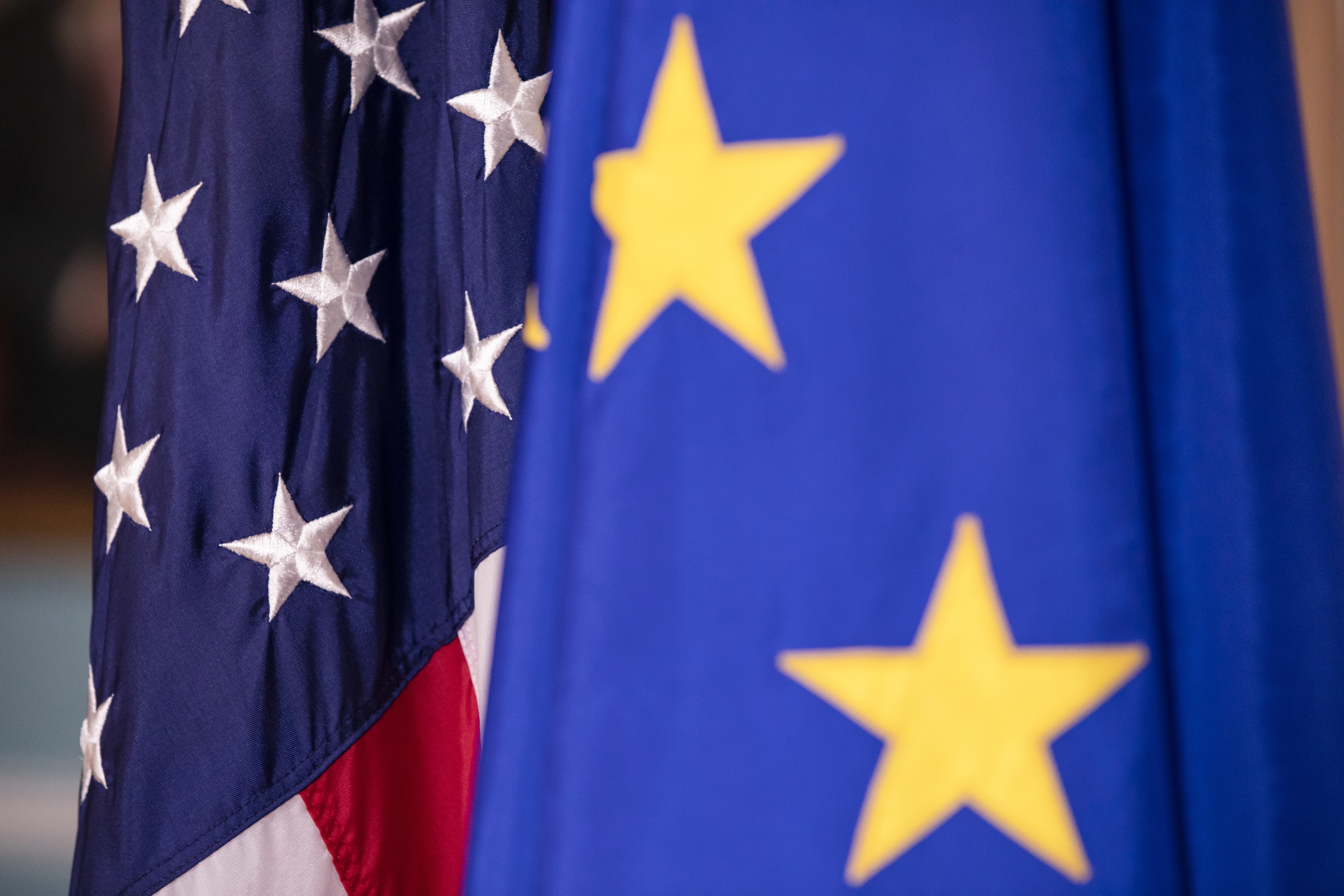Nouriel Roubini: monetary policy under President Trump

Markets will give Trump the benefit of the doubt, for now.
Image: REUTERS/Jason Reed
Nouriel Roubini
Professor Emeritus of Economics and International Business, Stern School of Business, New York UniversityStay up to date:
United States
When Donald Trump defeated Hillary Clinton in the United States’ presidential election, the market’s immediate negative response was to be expected. But by the next day, the market’s downward turn had already reversed itself.
US equities and bond yields rallied after Trump delivered a victory speech that seemed to signal that he was tacking to the center, which investors had originally expected him to do this summer, after he won the Republican nomination and entered the general election campaign. In his speech, Trump promised to be a president for all Americans, praised Clinton for her past public service, and vowed to pursue massive fiscal-stimulus policies centered on infrastructure spending and tax cuts for corporations and the wealthy.
Markets will give Trump the benefit of the doubt, for now; but investors are now watching whom he appoints to his administration, what shape his fiscal policies actually take, and what course he charts for monetary policy.
They may be watching monetary policy most closely. During his campaign, Trump threatened the US Federal Reserve’s independence, and heaped criticism on Fed Chair Janet Yellen. But Trump is a real-estate mogul, so we cannot immediately assume that he is a true monetary-policy hawk, and not a closet dove. His campaign rhetoric may have been directed at the Republican Party base, which is full of Fed-bashing gold bugs.
Trump could appoint hawks to the two Fed Board seats that are currently vacant, and he will certainly replace Yellen when her term expires in 2018. But it is unlikely that he will force her to resign before then, because markets would punish such an obvious violation of central-bank independence.
Even if Trump does choose a hawk to replace Yellen, his appointee would be only primus inter pares on the Federal Open Market Committee. Yellen’s successor would not be able simply to impose his or her view on the FOMC’s seven-member Board of Governors and five Reserve Bank presidents.
While the Fed did resemble an absolute monarchy under former Chairman Alan Greenspan, it became more of a constitutional monarchy under Greenspan’s successor, Ben Bernanke. Under Yellen, it might best be described as a democratic republic. This transformation cannot be reversed: each FOMC member holds strong views about which direction monetary policy should take, and each is willing to dissent when needed.
This means that a radical hawk appointed by Trump could end up in the minority, and would be consistently outvoted by the FOMC’s dovish majority. Of course, Trump may be able to change the Fed Board’s composition over time, by appointing new governors when Stanley Fischer, Lael Brainard, Daniel K. Tarullo, and Jerome H. Powell’s terms end. But if he takes this route, the market will still police the Fed’s actions. If continued low growth and low inflation do not justify rapid interest-rate increases, a hawkish Fed that raises rates anyway will face harsh disciplining by the market – and, by extension, so will Trump.
Moreover, premature and excessive hawkishness would strengthen the US dollar and sharply increase the US trade deficit, undermining Trump’s stated goal of creating jobs and boosting incomes for his blue-collar, working-class electoral base. If Trump cares about his base – or if he at least wants to avoid a political backlash from it – he should appoint dovish Fed governors who will favor easy-money policies that weaken the dollar. Ironically, President Barack Obama’s appointees, such as Brainard and Tarullo, are actually ideal for Trump’s agenda.
If Trump does choose a more hawkish monetary-policy approach, it will have an ambiguous impact on the dollar, owing to his other proposals’ downstream effects. Looser fiscal policy and tighter monetary policy should, as in former President Ronald Reagan’s first term, strengthen the dollar; but if Trump pushes the US toward protectionism, he will generate economic and geopolitical tail risks that would weaken the dollar and increase US country risk.
Similarly, Trump’s fiscal policies would also weaken the dollar over time – after an initial significant appreciation – as the substantially higher deficit spending would be financed either with easy money or bond issues that increase US sovereign risk. The net impact of all these factors on the dollar will all depend on how loose fiscal policy becomes, and on how tight monetary policy becomes.
Trump’s proposed policy mix would also have an ambiguous – and modest – impact on growth, if he appoints hawks to the Fed. Looser fiscal policy would help short-term economic growth; but tighter monetary policy would undercut those gains. Similarly, if Trump really does want to redistribute some income from capital to labor, and from corporate profits to wages (admittedly a big “if”), his policies could boost consumption; but his populist, protectionist policies would undermine business confidence, and thus capital expenditures, while reducing consumers’ purchasing power through higher inflation.
Equity markets will undoubtedly favor Trump’s proposals to loosen fiscal policy, deregulate business and finance, and cut taxes. But investors will be on the lookout for protectionism, Wall Street- and immigrant-bashing, and overly aggressive monetary hawkishness. Only time – and the market – will tell if Trump has struck the right balance.
Don't miss any update on this topic
Create a free account and access your personalized content collection with our latest publications and analyses.
License and Republishing
World Economic Forum articles may be republished in accordance with the Creative Commons Attribution-NonCommercial-NoDerivatives 4.0 International Public License, and in accordance with our Terms of Use.
The views expressed in this article are those of the author alone and not the World Economic Forum.
Related topics:
Forum Stories newsletter
Bringing you weekly curated insights and analysis on the global issues that matter.
More on Economic GrowthSee all
Atul Kumar
August 12, 2025
Elizabeth Henderson and Daniel Murphy
August 8, 2025
Li Dongsheng
July 31, 2025
Charlotte Edmond
July 30, 2025
Naoko Tochibayashi
July 30, 2025
Matt Watters
July 29, 2025





